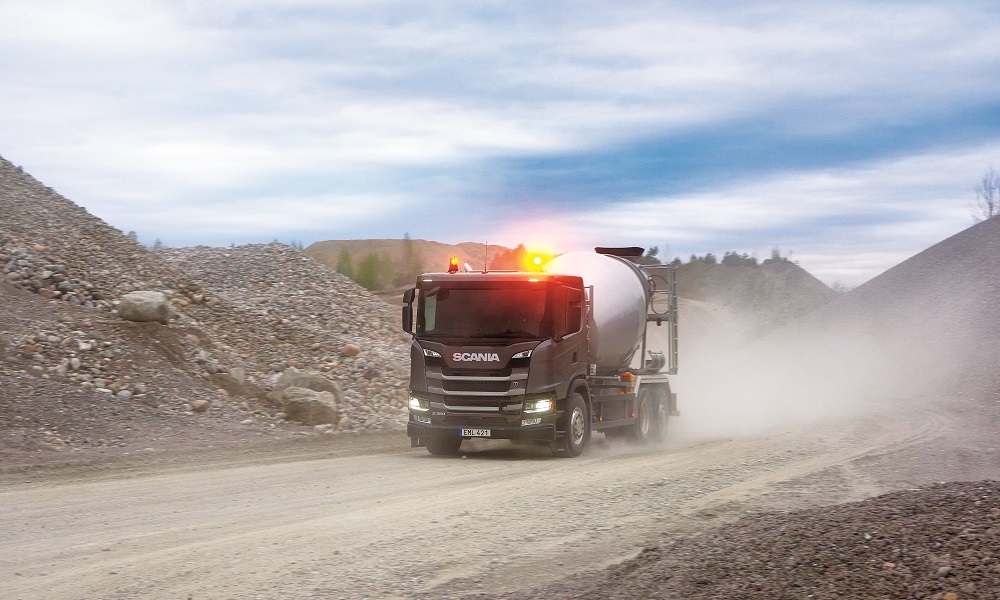Scania offers one of the widest range of connected services and powertrains for renewable or alternative fuels. Currently there are no less than nine different internal combustion engines available, ranging from 280 to 580 hp, intended for gas, biodiesel or bioethanol. And all of Scanias Euro 6 diesel truck engines can run on HVO.
Today we definitely see that a shift towards sustainability is also on its way in the construction segment, says Jenny Engvall, acting product director, construction, Scania Trucks. It is obvious that sustainability is a prerequisite for long-term profitability. All stakeholders have to contribute to curbing CO2 to combat global warming, and regulations such as environmental zones and diesel bans in cities have proved to be efficient wake-up calls to all kinds of hauliers.
All but one of the Scania trucks on display at Bauma can run on hydrotreated vegetable oil (HVO), a biodiesel than can offer CO2 reductions by up to 90%. However, the other truck, a Scania G 410 with mixer body, is powered by Scanias 13l inline six gas engine with performance that is on a par with diesel engines. This particular truck has a compressed natural gas (CNG) tank installation, which means it can run on natural gas as well as on biogas. The 8 m3 hybrid mixer from Italian CIFA is rotated by an electric motor.
The hybrid Scania mixer on display with its biogas engine powertrain is a fine example of what we together with our partners can offer for todays demanding settings, says Engvall. This concrete truck can operate with less noise and less emissions, for instance when the task is to build new infrastructure in dense and crowded urban environments.
But what about electrification and hybrids, when will those kinds of solutions make their way into the rough construction segment?
They are already here, says Engvall. Last autumn Scania introduced our latest hybrid trucks, a solution that combines the best of both worlds: they have combustion engines that can run on HVO and an electric motor that can power a three-axle, 26t tipper truck for up to 10km with zero tailpipe emissions and virtually no noise. That would be an excellent city tipper in major cities with environmental zones and noise regulations.
Scanias hybrids can be ordered with cabs from either the L or the P-series. Due to the hybridisation technology, these trucks can comply with some of the most stringent environmental demands, while still being able to travel long distances without fuelling range anxiety. And a three-axle configuration tipper truck would still have a usable payload of up to 14 tonnes, or less if a crane or a hook lift (or both) are included. The vehicle can also be ordered in Scania XT form, unless a truck with a less dynamic exterior approach is favoured.
The need for a shift and decarbonisation is global and we must all contribute, says Engvall. The upside is that this does not mean Scanias construction customers need to sacrifice traits like driveability and robustness, or their total operating economy.
MECN is collaborating with Construction Machinery News Middle East magazine to preview Bauma 2019. Look out for our special hot list of equipment as part of our special coverage before and during the event.



